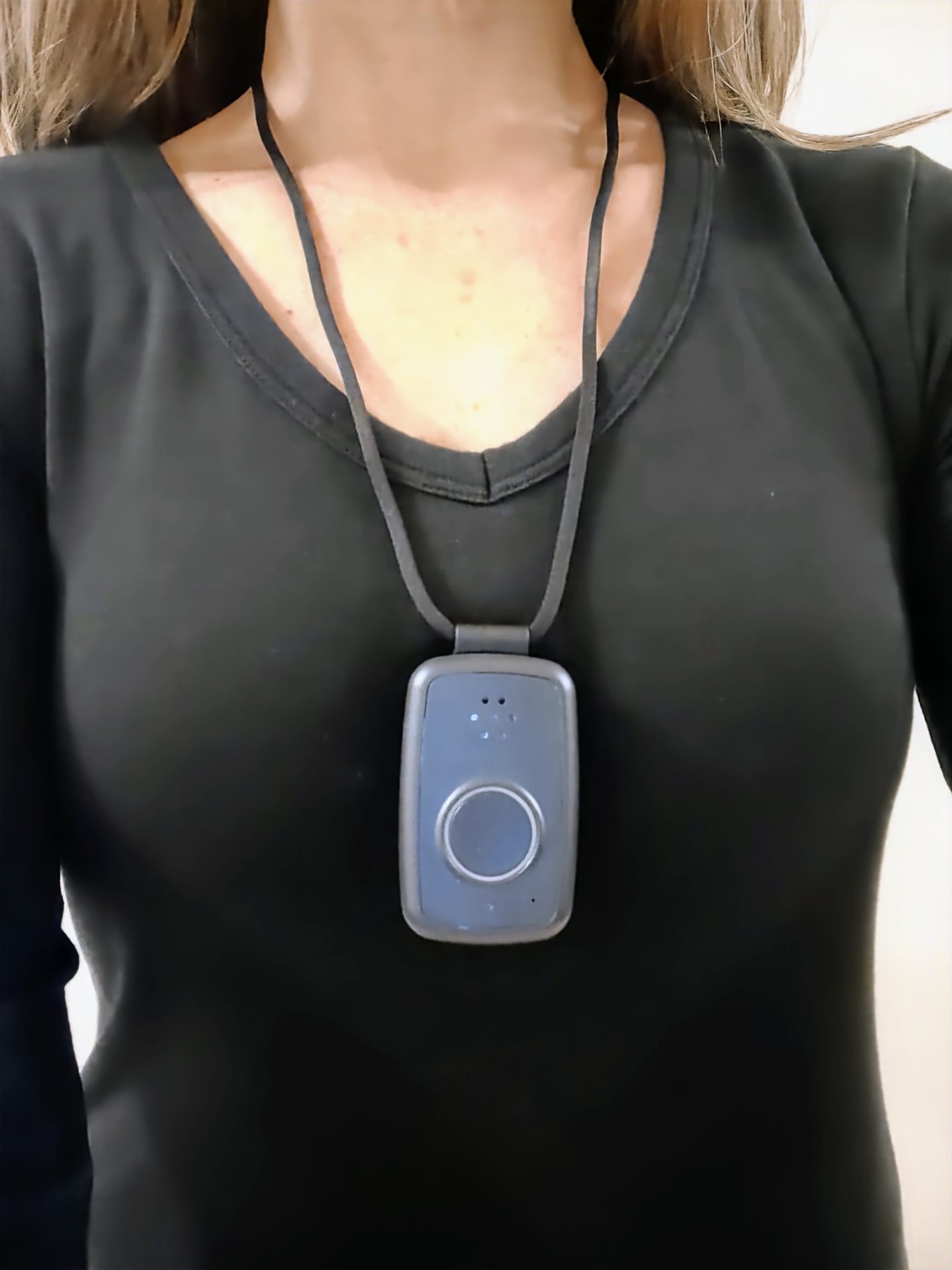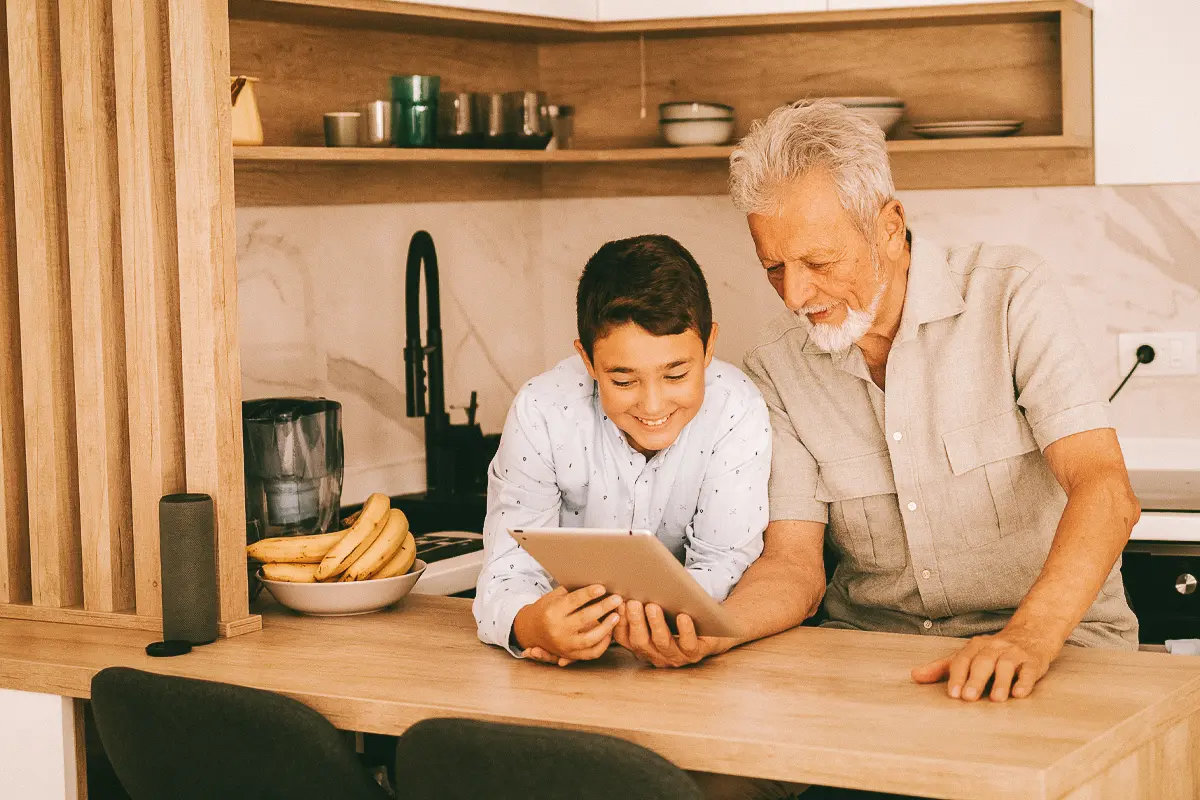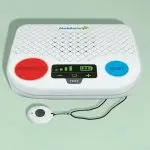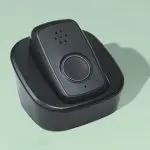Table of Contents
Key Takeaways
- MobileHelp sells medical alert systems with optional fall detection for an additional $11 per month.
- MobileHelp offers both at-home and on-the-go medical alert systems. The at-home devices include the Mobile Help Classic and the Wired Home. The on-the-go devices include the MobileHelp Solo, Micro, and Mobile Duo. One device also includes both a mobile and home device: the MobileHelp Duo.
- MobileHelp offers four different service plans with no activation or equipment fees.
As we grow older, our risk of falling unfortunately increases. For adults 65 or older, accidental falls are the primary cause of injury. Research shows that the fear of falling occurs in 30–50 percent of older adults living independently, regardless of whether they’ve experienced a previous fall or not.
While 24/7 care may not be an ideal or affordable option, alternatives like a medical alert system can help older adults live independently in their homes while providing reassurance to caregivers and loved ones that help is only a button away if an emergency happens.
“It [a medical alert system] can bring peace of mind to family members and enhance safety for those at risk at a lower cost than round-the-clock in-person caregiving,” says Anne Sansevero, board president of the Tucson, Arizona-based Aging Life Care Association.
We tested MobileHelp, one of our top picks for best medical alert systems. Read on to learn more about this brand and its at-home and mobile systems.
MobileHelp Classic review
Overall, our testers say setup was fairly straightforward for the MobileHelp Classic, an in-home system that works on the AT&T cellular network. The user guide was easy to read, and the user test was simple. Confirmation was clear when we completed the test, and the message was cheery and friendly. However, they didn’t think it was initially clear that you needed to pair your help button necklace to the base station and initiate a separate setup. The help button necklace allows you to roam your house, so you don’t have to be near the base station if you need help. While the brand advertises that the necklace has a range of up to 1,400 feet from the base unit, we suggest testing the range around your house when you first get your system. Go outside and make sure that if you press the button, you can connect to the monitoring center.
We also like that the Classic is compatible with the MobileHelp Fall Button, an automatic fall detection necklace This necklace has a built-in sensor to detect downward motion. If the necklace detects a fall, it automatically contacts the monitoring center. . When testing the fall detection sensitivity, it has detected most slow falls During a slow fall, we wear the medical alert system while sitting in a chair, then bend forward to put our knees on a mat. From there, we lie completely flat on our stomachs for at least 30 seconds. and fast falls To test fast falls, we drop each device from shoulder height and let it remain on the mat for at least 30 seconds. , and the response from the 24/7 monitoring center is consistent. However, we would like it to connect faster to the monitoring center, as it took longer than one minute during a few of our tests. The shortest connection time was 33 seconds.
Our team says it’s easy to tell if the base system isn’t plugged in. The system will indicate whether the system is unplugged or not getting power by saying “power not detected.” When you plug it in, it will say “power detected.” The necklace is rechargeable and will flash red every five minutes and beep every two hours when the battery is critically low.
From our tester
“This device has super simple directions with large pictures and fonts. The Quick-Start Guide is larger than others we have seen, so it is super simple to use.”

MobileHelp Solo review
Insights from our tester
Our testers find the MobileHelp Solo’s instructions helpful and easy to follow, noting we have made quick connections during testing calls. We like the fact that the mobile Solo has GPS location tracking. This allows monitoring center staff to locate you quickly during an emergency while giving caregivers peace of mind knowing where their loved one is through the MobileHelp Connect app.
While we like that this mobile system offers fall detection, it’s not integrated into the mobile system, meaning you’ll have to wear a second necklace to use the service. Our testers note that the mobile device by itself is clunky and uncomfortable, so wearing another necklace is not ideal. The fall detection necklace can work up to 600 feet from the mobile system, but we recommend wearing both at all times because you can’t talk into the fall detection necklace like you can with the mobile unit.
We also find the buttons on the side of the mobile device hard to press, making it difficult to tell whether we were successful in making a call to the monitoring center. It may also make it harder for people with dexterity issues. If you’re looking for a mobile system, we recommend the MobileHelp Micro since it offers integrated fall detection.
From our tester
“The testing and set-up were clear, and the pairing instructions were included, helpful, and easy to follow, but the power and test buttons on the right side of the device were hard to press.”

MobileHelp Micro review
Insights from our tester
If you’re looking for a MobileHelp mobile system, we recommend the Micro. Right away, our testers found this mobile system more comfortable than the Solo. We also like that the fall detection is integrated into the system, so you don’t have to wear two different necklaces. So far during testing, this system has detected all slow and fast falls, making it a highly sensitive device. Like the Solo, it has GPS tracking so the monitoring center can dispatch first responders to your location during an emergency while also allowing caregivers to track care recipients.
Like the other systems, our team found the MobileHelp Micro easy to set up and test, with consistent monitoring center response times. Unfortunately, the device’s buttons are small and somewhat difficult to press but easier to use than the Solo.
Since this system performs so well in fall detection, we highlighted it in our best fall detection medical alert systems review.
From our tester
“The testing was clearly laid out with numbered instructions, pictures, lights, and verbal cues to guide us through the setup. The overall process only took one minute.”

Our testing experience
When shopping for a medical alert system, you can only learn so much information by searching a brand’s website or speaking with a sales representative. You can get a general idea of features, but you won’t know what it’s like to use it. Is it simple to set up the base station? Is the help button necklace comfortable to wear? How easy are the buttons to press?
That’s why we do the testing for you. Based on our experiences, we want to provide the most helpful information about our favorite medical alert systems.
The Handbook Team has tested 28 medical alert systems across 10 brands:
- Bay Alarm Medical
- GetSafe
- HandsFree Health
- LifeFone
- Lifeline
- Lively
- Medical Care Alert
- Medical Guardian
- MobileHelp
- UnaliWear
When choosing medical alert systems to test, we consider well-known brands with a generally positive reputation. Our team picks brands with various pricing options, device designs, and safety features.
Our testing process looks like this:
The Handbook Team reviews a 30-question checklist while setting up and testing each medical alert system. We also follow each device’s user guide and note what is intuitive or difficult about the setup process.
From our tester
“The MobileHelp Classic has super simple directions with large pictures and fonts. The Quick-Start Guide is larger than others and is super simple to follow.”
We spend most of our testing calling the monitoring center since this is the most important feature of any medical alert system. If the device has fall detection, we attempt six additional calls with fall detection tests.
From our tester
“For all fall tests, we wait 60 seconds with the device still on the ground before claiming whether the test was successful. Many fall detection devices don’t register a fall if it’s followed by sudden movement.”
While it’s difficult to duplicate true falls in a test environment, and more real-world fall data is necessary for a standard accuracy rate of fall detection devices, we test fall detection accuracy with a uniform testing method.
Our team conducts three “slow” and three “fast” test falls while wearing the fall detection device. We start all slow falls by sitting in a chair at 90 degrees and dropping to our knees before falling face down on a mat.
For the fast fall, we drop the device from shoulder height to the mat to replicate a fast, hard-impact fall.
“Generally speaking, a hard fall is a fall that can be difficult to stop, happens quickly, and results in a strong impact to the body,” says Sean Marchese, a registered nurse with more than 20 years of experience. “A slow fall is a fall that occurs more gradually, and the impact is likely weaker. However, individuals are not immune to injury after a slow fall.”
If you or your care recipient have a higher risk of falling, Marchese recommends being proactive and speaking with your doctor about assistive devices and prevention strategies.
Our overall thoughts about MobileHelp
What we liked about MobileHelp
Our team appreciates that MobileHelp provides medical alert systems for the home and on the go. MobileHelp’s devices do not require a landline connection except for the Wired Home, so you can use these devices anywhere with AT&T coverage. Plus, most of MobileHelp’s products are compatible with the MobileHelp Fall Button, allowing you to add fall detection to your package for $11. All the fall detection necklaces we tested accurately detected falls, making it a dependable brand. Finally, this brand doesn’t charge activation or equipment fees, making it a budget-friendly option.
Our MobileHelp medical alert system complaints
We don’t like that you have to wear two devices if you want fall detection with the Solo mobile device. If you’re looking for a mobile system with fall detection integration, we recommend the Micro. Our testers say the brand’s mobile devices are slightly difficult to use when it comes to pressing the buttons, which are often small and hard to activate. This could pose a challenge for people with dexterity issues.
What does a MobileHelp medical alert system cost?
Typically, at-home medical alert systems cost $20–$30 per month, while on-the-go medical alert systems cost about $30–$40 per month. The specific cost of a MobileHelp medical alert system depends on the system and plan you choose. MobileHelp offers six different medical alert systems and four plans: annual, semi-annual, quarterly, and monthly. The most affordable MobileHelp alert system is the MobileHelp Wired Home, which costs $27 per month. The most expensive MobileHelp alert system is the MobileHelp Mobile Duo, which costs $50 per month.
Does MobileHelp offer fall detection?
Most of MobileHelp’s offerings can be supplemented with a fall detection necklace. The MobileHelp Micro includes integrated, automatic fall detection in its construction, while the Classic, Solo, and Duo are compatible with the MobileHelp Fall Button for an additional $11 per month.
How much does fall detection cost?
Adding fall detection to any of the MobileHelp systems costs $11 per month. The Mobile Fall Button is not sold on its own, so you would need to purchase a compatible MobileHelp device to use the fall detection feature.
Other add-ons
MobileHelp offers free ground shipping for plans $15 or more as well as a free lockbox with every order of $30 or more. This brand has no equipment or activation fees, and it’s compatible with AT&T coverage, so landlines are unnecessary unless you buy the MobileHelp Wired Home, which requires a landline to function.
MobileHelp also offers MobileHelp Connect Premium for an additional $6 per month. This service allows customers to replace their lost or damaged equipment for a small deductible. It also includes a price guarantee, so customers will be locked into the standard retail rate of their preferred plan for two years. Finally, Connect Premium offers discounts on certain MobileHelp products, including 25 percent off all accessories and 30 extra pings per month for location detection through the mobile app. This is helpful for caregivers who would like to frequently check on their care recipient through the MobileHelp Connect app. Without the add-on, they can only do 30 location requests a month.
Compare MobileHelp systems as of 2024
|
MobileHelp Classic
|
MobileHelp Wired Home
|
MobileHelp Solo
|
MobileHelp Micro
|
MobileHelp Duo
|
MobileHelp Mobile Duo
|
|
|---|---|---|---|---|---|---|
| Monthly cost | $25 | $25 | $35 | $35 | $45 | $50 |
| Device type | In-home | In-home | Mobile | Mobile | In-home and mobile | Mobile |
| Range | 1,400 feet | 600 feet | Unlimited | Unlimited | 1,400 feet from base station; unlimited for mobile | Unlimited |
| Connection type | AT&T Coverage | Landline | AT&T Coverage | AT&T Coverage | AT&T Coverage | AT&T Coverage |
| Fall detection cost | $11 per month | $11 per month | $11 per month | $11 per month | $11 per month | $11 per month |
| Battery life | 30-plus hours for the base station, five-plus years for the necklace and wristbands | 30-plus hours for the base station, five-plus years for the necklace | 24-plus hours for the mobile device, five-plus years for the necklace and wristbands | 24-plus hours for the mobile device | 24-plus hours for the mobile device, 30-plus hours for the base station, five-plus years for the necklace and wristbands | 24-plus hours for the mobile device, five-plus years for the necklace and wristbands |
| Response time in seconds | 25–50 seconds | 25–50 seconds | 25–50 seconds | 25–50 seconds | 25–50 seconds | 25–50 seconds |
Our final verdict
MobileHelp offers two at-home systems (the Classic and the Wired Home), three on-the-go systems (the Solo, the Micro, and the Mobile Duo), and one combined system (the Duo). We like that they have so many options, allowing you to find a device that fits your lifestyle.
MobileHelp systems also come with help button necklaces and bracelets with water-repellent technology so the devices can be worn in weather conditions as well as the shower. The mobile devices come with GPS technology to make sure emergency services can find you if an accident or fall does occur.
MobileHelp offers annual, semi-annual, quarterly, and monthly plans on all of their systems, so customers can pick the plan that works best for them. We think MobileHelp is a quality brand and have included it in our top picks on our best medical alert systems, best medical alert systems for fall detection, and best medical alert necklace roundups.
Frequently asked questions
MobileHelp medical alert systems work on the AT&T cellular network, which is included in your service plan.
Yes, three of the MobileHelp products are on-the-go devices: the Solo, the Micro, and the Mobile Duo. These mobile systems can be used on-the-go and connect to the 24/7 monitoring center when you push the help button on the device. These devices also come with a necklace and wristbands for easier wearing, which can operate up to 600 feet away from the mobile device. However, the mobile device should be worn at all times because the necklace and wristbands do not have a speaker to talk to the monitoring center.
No, there are no contracts with MobileHelp.
- Lee, D., Tak, S.H. A concept analysis of fear of falling in older adults: insights from qualitative research studies. BMC Geriatr 23, 651 (2023). Link
- Broadley, R.W., Klenk, J., Thies, S.B., Kenney, L.P., and Granat, M.H. (2018). Methods for the Real-World Evaluation of Fall Detection Technology: A Scoping Review. Sensors, 18(7), 2060. Link










